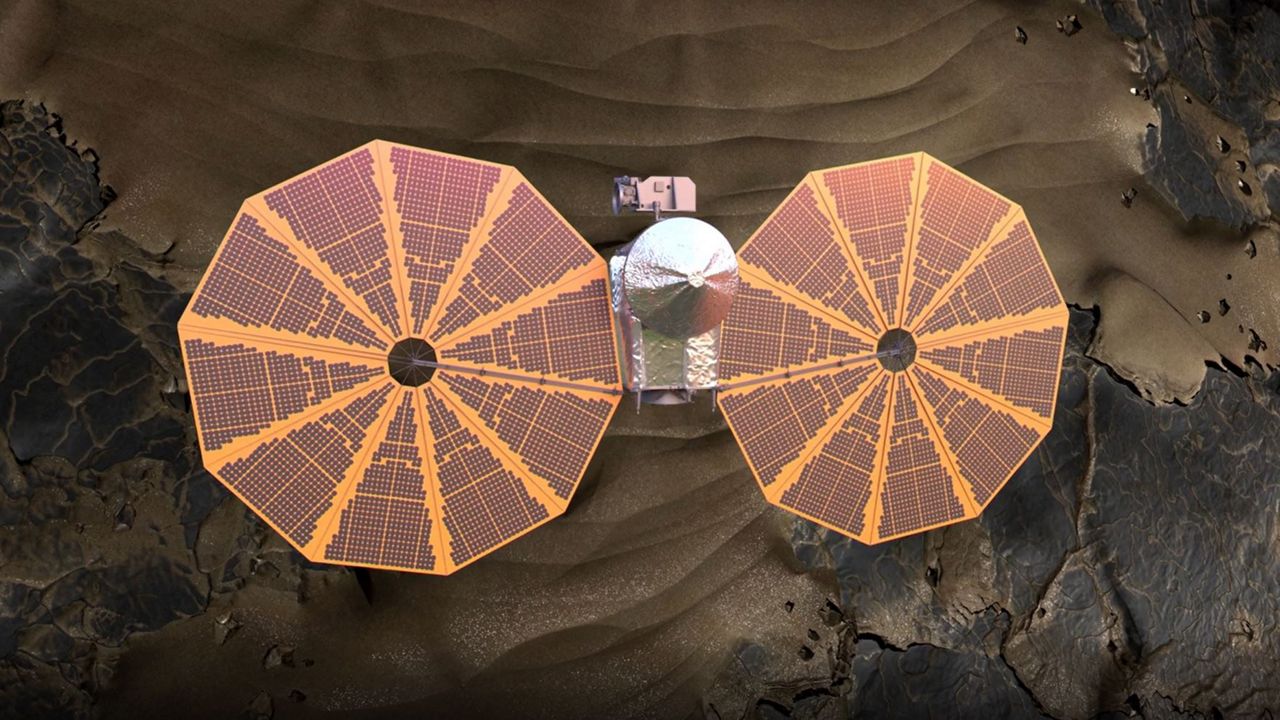BREVARD COUNTY, Fla. — During the early morning hours of Saturday, NASA and the United Launch Alliance sent the Lucy spacecraft on a joint 12-year mission to study Jupiter’s asteroids in the hopes of unlocking the origins of the solar system.
The ULA’s Atlas V rocket sent NASA’s Lucy spacecraft from Space Launch Complex 41 at the Cape Canaveral Space Force Station at 5:34 a.m. Saturday.
Lucy’s $981 million mission is the first to aim for Jupiter’s so-called Trojan entourage: thousands — if not millions — of asteroids that share the gas giant’s expansive orbit around the sun. Some of the Trojan asteroids precede Jupiter in its orbit, while others trail it.
Lucy will swing past Earth next October and again in 2024 to get enough gravitational oomph to make it all the way out to Jupiter’s orbit. On the way there, the spacecraft will zip past asteroid Donaldjohanson between Mars and Jupiter. The aptly named rock will serve as a 2025 warm-up act for the science instruments.
Lucy is named after the 3.2 million-year-old skeletal remains of a human ancestor found in Ethiopia nearly a half-century ago. That discovery got its name from the 1967 Beatles song “Lucy in the Sky with Diamonds."
Understanding the mission
The purpose of the mission is to study Jupiter's Trojan asteroids, two large swarms of numerous asteroids within Jupiter’s vast orbit.
The two large swarms seen in Jupiter's orbit are called Jupiter's Trojan asteroids and they will be the celestial playground of the 12-year mission.
However, out of the more than 4,800 Trojan asteroids associated with the gas giant, Lucy’s mission will study only six: Patroclus, Menoetius, Eurybates (and that Trojan asteroid's moonlet Queta), Orus, Leucus, and Polymele. But Lucy will visit a Main Belt asteroid (a non-Trojan) named DonaldJohanson.
“These things really are the fossils of what planets formed from. … If you want to understand where the solar system came from, you have to go to these small bodies,” said Dr. Hal Levison, Lucy’s principal investigator on Wednesday during a pre-launch news briefing.
Starting the mission
Sending Lucy on this 12-year mission is ULA’s Atlas V 401 rocket that stands 188 feet tall. It is the 81st launch for the Atlas V rocket and it marks the 100th takeoff from Space Launch Complex, described ULA’s Chief Operating Officer John Elbon during the press conference.
Orbiting the Earth for a year, Lucy will use a series of “Earth-gravity assists” that will send it to one of the swarms of Jupiter's Trojan asteroids. Once Lucy has finished with that swarm, it will return to Earth’s orbit for another assist and be slingshotted to the other group of asteroids to collect more data.
Lucy will fly over these six asteroids to gather and record what their surface is like and other information that ground telescopes and orbital ones like the Hubble Telescope have not been able to detect.
Even though Lucy has two solar panels — each close to 24 feet in diameter — to power the spacecraft’s systems and batteries, it is carrying 1,600 pounds of liquid hydrazine and liquid oxygen for fuel to propel Lucy around the asteroids, according to NASA.
Because the spacecraft will not be hibernating but constantly on and communicating with the Earth during its entire mission, Levison said his team will be busy collecting and downloading the data.
Honoring the origins of Lucy
 The Lucy spacecraft will conduct a 12-year mission to understand the origins of the solar system by studying six of Jupiter's asteroids. (NASA)
The Lucy spacecraft will conduct a 12-year mission to understand the origins of the solar system by studying six of Jupiter's asteroids. (NASA)
The $981-million mission is named in honor of the human fossil known as Lucy, who was co-discovered by paleoanthropologist Dr. Donald Johanson in 1974 and who had one of Jupiter's asteroids named after him, said Levison.
“Our mission is to find out basically how the solar system evolved and so giving credit to the fossil seems appropriate to us,” Levison shared.
One of the biggest challenges during the 14 months it took to create the Lucy spacecraft was doing it during the pandemic, described Donya Douglas-Bradshaw, Lucy’s project manager at the NASA Goddard Space Flight Center.
“Obviously, when you’re building hardware and integrating and testing it, there’s a lot of hands-on and so it was particularly challenging to try to build it and maintain the safety of the workforce,” she said, sharing that the team of workers were able to do that without impacting the mission’s original schedule.
A smooth rollout for the mighty #AtlasV this morning out to SLC-41. @ulalaunch says the booster that’s being used for this mission was originally intended for @BoeingSpace crewed #Starliner test before it was shifted to #OFT2. Now, it will send Lucy on its way to the Trojans. pic.twitter.com/i4G0GyGAVk
— Will Robinson-Smith (@w_robinsonsmith) October 14, 2021



